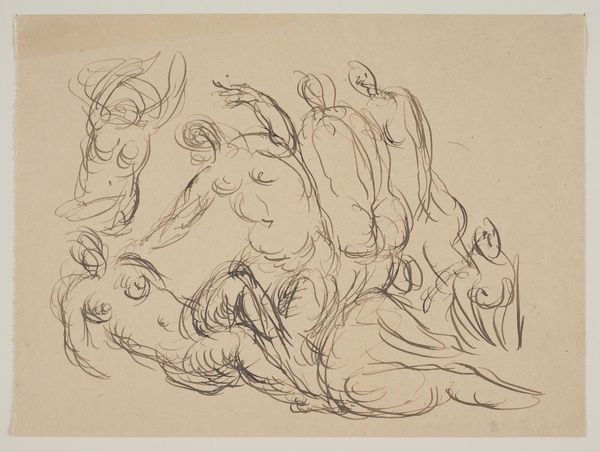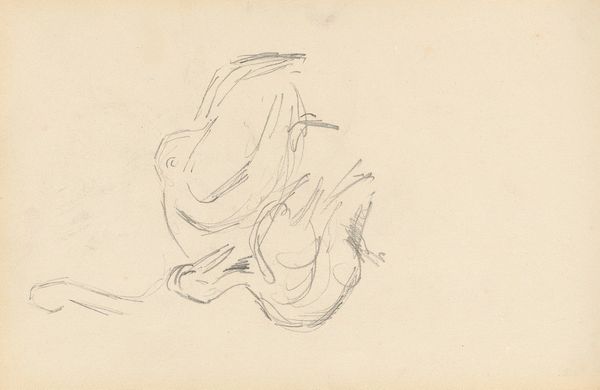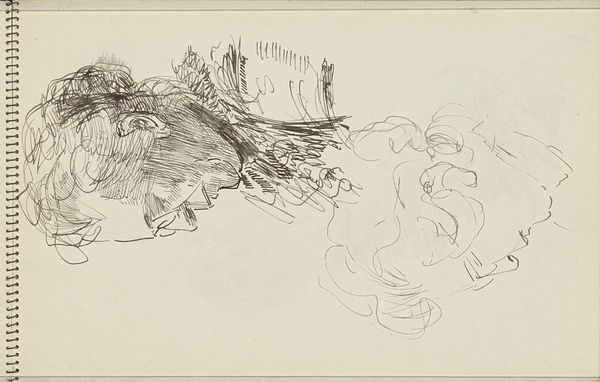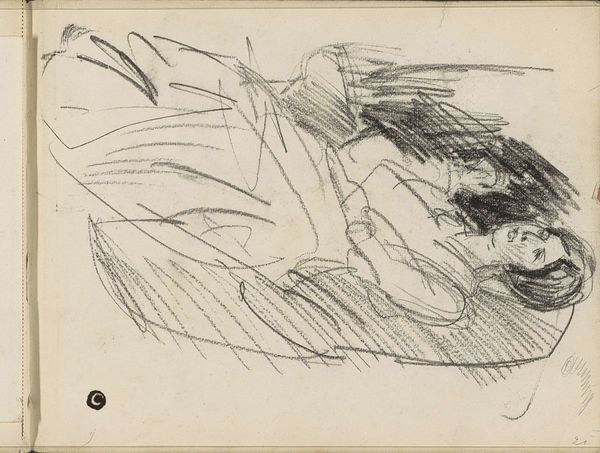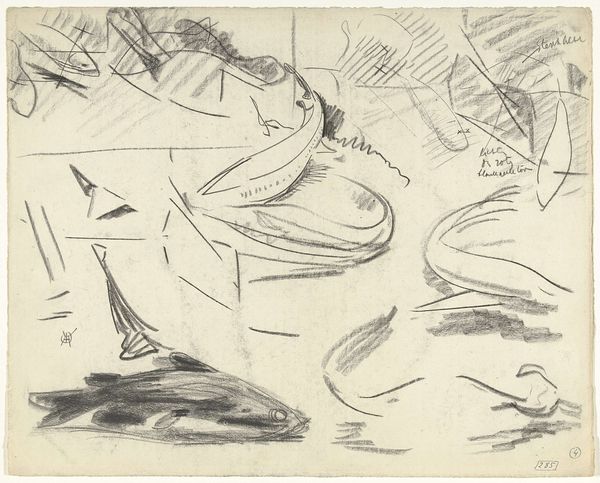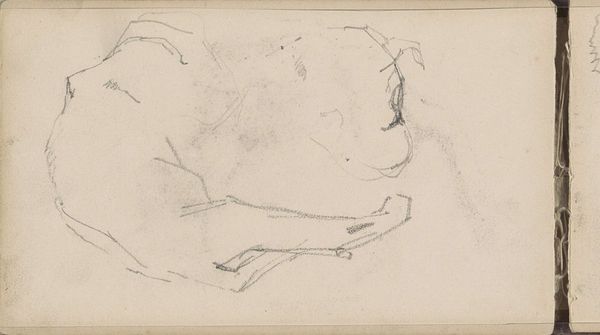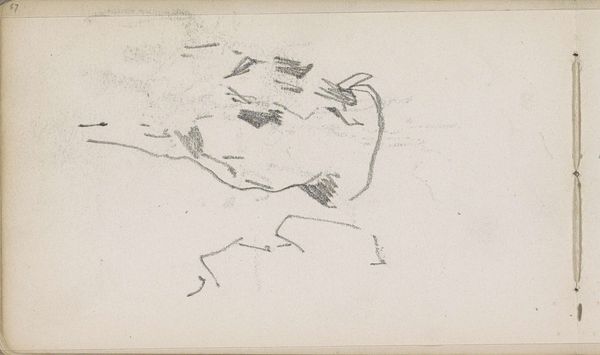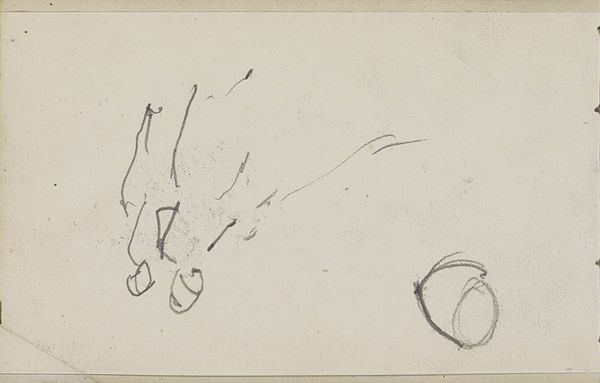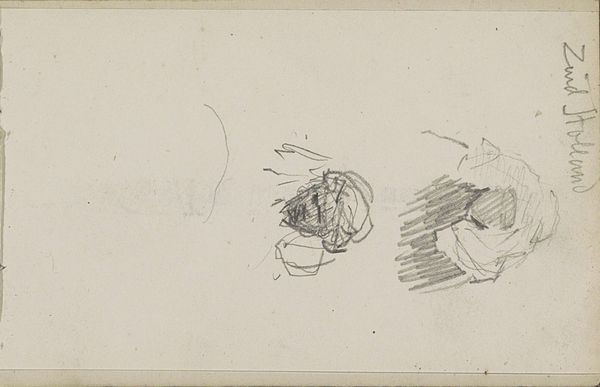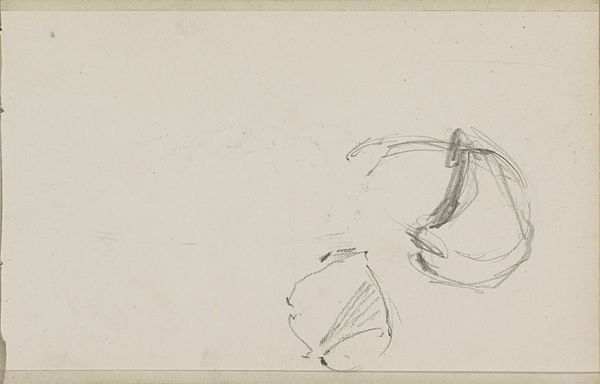
drawing, ornament, pencil
#
drawing
#
ornament
#
organic
#
art-nouveau
#
pen sketch
#
geometric
#
pencil
#
line
Dimensions: height 101 mm, width 164 mm
Copyright: Rijks Museum: Open Domain
Curator: Welcome. Here we have Gerrit Willem Dijsselhof’s “Ornament met bladeren,” a drawing dating from 1876 to 1924. Editor: It has the immediate feel of something caught mid-process, doesn’t it? Like a fleeting thought quickly sketched out in pencil. There's a sense of unfinished potential, which draws me in. Curator: Dijsselhof, active in the Netherlands, was deeply influenced by the Art Nouveau movement, which favored organic forms. His aesthetic was inextricably linked with the burgeoning Dutch Arts and Crafts movement. In this case, consider how the organic motif underscores the socio-cultural embrace of nature during industrial expansion, presenting itself in radical visual contrast with modernity. Editor: Absolutely. The stylization of those leaves—those repetitive, almost geometric ovals—is where that contrast plays out for me. While supposedly "organic," they are tamed, placed in service of decorative effect, and confined by their line-based representation. They almost appear like fetters. I also question the period dating for this work; in a social framework, who determined that the ornamental or visual could happen during this extended range? Curator: Your feminist reading about the fetters around the decorative elements makes perfect sense to me. Art Nouveau pushed back against industrialisation through idealized representation of nature, as you are touching on, and artists were often trying to assert that hand-made art held its place of cultural value as the rise of mass production threatened to erase those voices from art and history. This very rough study or sketch might be for a furniture panel or fabric design; he created many total art designs for homes, and the organic-versus-geometric contrast has a deep theoretical background. Editor: Precisely. It's easy to get swept away by the beauty of Art Nouveau. That said, you bring to the fore the very strong need to historically contextualize art during its specific period to examine who creates these so-called markers or ornamental structures and styles. Looking closer allows you to begin interrogating this power structure as we come to witness Dijsselhof. I'm keen to explore other artworks with a closer inspection in our further engagements. Curator: A powerful consideration. Understanding how art is linked to labor practices helps contextualize production conditions, in a system with complex aesthetic, economic, and socio-political impacts on history. Editor: It opens new windows into the narratives museums share, doesn't it?
Comments
No comments
Be the first to comment and join the conversation on the ultimate creative platform.

